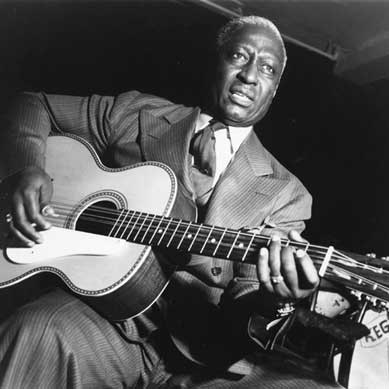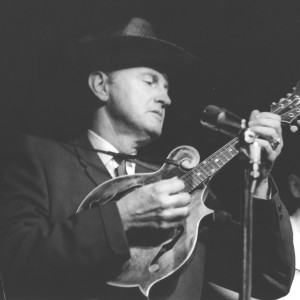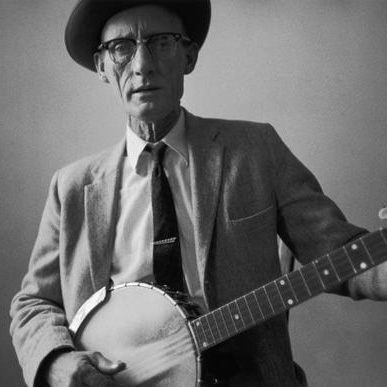Example of A Well-Traveled Song—”Black Girl” or “In the Pines”
The song known as “Black Girl” or “In the Pines” dates back at least to the 1870’s. The earliest known fragment, sung by Lizzie Abner, was collected in 1917 at Oneida School, Kentucky:
Black girl, black girl, don't lie to me Where did you stay last night? I stayed in the pines where the sun never shines And shivered when the cold wind blows. —English Folksongs from the Southern Appalachians by Cecil Sharp (1932),278

Biography

Biography Time Cover (1962)

Source: The Best of Bill Monroe (MCA 1999).
biography

Biography

Nirvana: Unplugged
“A Simple Song That Lives Beyond Time”
By Eric Weisbard
(From The New York Times, November 13, 1994):
Immediately after the suicide of Kurt Cobain, lead singer of the rock band Nirvana, last April, MTV broadcasted almost continuously an hourlong “Unplugged” special that the band had recorded the previous fall. The final song on the program was unexpected: it was the only one not previously recorded by Nirvana or even written by an alternative rocker. Called “Where Did You Sleep Last Night,” it had the cadences of an old ballad or blues tune and lyrics that Mr. Cobain’s deathly rasp made absolutely haunting.
In fact, the song was a folk song, usually known as “In the Pines,” which dates back at least to the 1870’s. Its appearance in the repertory of a Seattle grunge singer is only the latest chapter in its complex history. (An album of Nirvana’s MTV concert, “Unplugged in New York,” was recently released on the DGC label.) Those who have recorded the song include the folk legends Leadbelly, Joan Baez and Pete Seeger, the country pioneers Bill Monroe and Chet Atkins, the rockers Sir Douglas Quintet and Duane Eddy, the pop vocalist Connie Francis and the jazz saxophonist Clifford Jordan.
Even within alternative music, “In the Pines” has something of a history. Annette Zalinskas, formerly of the Bangles, recorded the song with her band Blood on the Saddle on 1986’s “Poison Love” album. Australia’s Triffids did a takeoff on “In the Pines.” (The genre-crossing Beck used the phrase “in the pines” in doggerel he wrote for the booklet that accompanies his recent album “Mellow Gold.”)
Researching the song for a 1970 dissertation, Judith McCulloh found 160 different versions, a finding that raises the question: Why does a song like “In the Pines” endure and permutate so insistently? The answer may be that its essence is not a specific story or even a musical style but the kind of intensely dark emotion that, as is the case with much in American music, survives longer in popular memory than does treacly sentiment.
The song probably has its origins in the Southern Appalachians, where it is still passed on as part of an oral tradition. The mystery writer Sharyn McCrumb says a college friend from Georgia taught her a verse that she used as a chapter heading in her 1992 novel, “The Hangman’s Beautiful Daughter.” As she demonstrated in a telephone conversation, she can also sing a very different “Mitchell County, N.C.” version that includes a reference to the local Clenchfield railroad line.
Dolly Parton, who performs a version on her recent album “Heartsongs” says: “The song has been handed down through many generations of my family. I don’t ever remember not hearing it and not singing it. Any time there were more than three or four songs to be sung, ‘In the Pines’ was one of them. It’s easy to play, easy to sing, great harmonies and very emotional. The perfect song for simple people.”
In the 1981 book “Long Steel Rail: The Railroad in American Folksong,” the music historian Norm Cohen notes that “In the Pines” has three frequent elements, not all of which always appear. There is the chorus “in the pines,” a stanza about “the longest train I ever saw” and another verse in which someone is decapitated by a train.
“The longest train” section probably began as a separate song, which merged with “In the Pines”; references in some renditions to “Joe Brown’s coal mine” and “the Georgia line” may date its origins to Joseph Emerson Brown, a former Georgia governor, who operated coal mines in the 1870’s. The earliest printed version was four lines and a melody compiled by Cecil Sharp in Kentucky in 1917. Another variant, mentioning the train accident, was recorded in 1925 by a folk collector onto cylinder, a precursor of the phonograph. The next year, commercial hillbilly recordings of “In the Pines” and “The Longest Train” began appearing.
How did Kurt Cobain discover “In the Pines”? Long before Nirvana’s rise, he and Mark Lanegan, leader of the Seattle rock group Screaming Trees, formed a friendship around a mutual love of Leadbelly. Mr. Lanegan owned a copy of the original Musicraft 78 rpm of “Where Did You Sleep Last Night” that Leadbelly recorded in 1944. “My father gave me the record when I was a kid,” Mr. Lanegan says. “He was a schoolteacher, and he found in the attic of an old school a box of blues records.” Mr. Lanegan and Mr. Cobain recorded an EP of Leadbelly tunes, but only “Where Did You Sleep” was released on Mr. Lanegan’s 1990 album, “The Winding Sheet,” with Mr. Cobain playing guitar.
ALTHOUGH LEADBELLY IS credited with authorship of “Where Did You Sleep” on “The Winding Sheet” and Nirvana’s “Unplugged in New York,” his own discovery of the song was almost as secondhand as that of the Seattle musicians. Alan Lomax, the folk music archivist and promoter, reported to Ms. McCulloh that Leadbelly learned parts of the song from someone who had taken it from the 1917 Sharp version and other parts from the 1925 cylinder recording.
For all its complicated history, the meaning of “In the Pines” may be even more blurry, a vast continuum of different varieties of misery and suffering. “This unique, moody, blues-style song from the Southern mountain country is like a bottomless treasure box of folk-song elements,” wrote James Leisy in his 1966 book “The Folk Song Abecedary.” “The deeper you dig, the more you find.”
The basic elements of the song remain similar from version to version, but the context can be altered with a few words. It may be a husband, a wife or even a parent whose head is “found in the driver’s wheel” and whose “body has never been found.” Men, women and sometimes confused adolescents flee into the sordid pines, which serve as a metaphor for everything from sex to loneliness and death. The “longest” train can kill or give one’s love the means to run away or leave an itinerant worker stranded far from his home.
In the bluegrass and country versions popularized by Mr. Monroe, the song’s eerie qualities are rooted in the genre’s “high lonesome” sound, with fiddles and yodeling harmonies used to evoke the cold wind blowing. Lyrics about beheading drop out, but the enigmatic train is almost as frightening, suggesting an eternal passage: “I asked my captain for the time of day/ He said he throwed his watch away.”
In other versions, the focus is clearly, as the novelist Ms. McCrumb notes, on a confrontation: “There’s a woman doing something not socially acceptable, and she’s been caught at it.” In one case, a husband demands: “Don’t lie to me; where did you sleep last night?” In their traditional interpretation, the Kossoy Sisters begin: “Little girl, little girl, where’d you stay last night? Not even your mother knows.” Despite all the variations of “In the Pines,” these questions are almost never asked of a man. The woman may also be asked, “Where did you get that dress, and those shoes that are so fine?” and the answer is “from a man in the mines, who sleeps in the pines.”
In Mr. Jordan’s jazz version, recorded for Atlantic in 1965, the singer Sandra Douglass makes the meaning even more explicit, drawing on a later Leadbelly version known as “Black Girl.” Here the woman is in the pines because her husband has died under the train, leaving her with little choice but prostitution. “You caused me to weep/ And you caused me to moan/ You caused me to leave my home,” she sings, perhaps to the cruel fates, perhaps to the ghost of her husband.
When Hole, the band led by Mr. Cobain’s widow, Courtney Love, played in New York in September, the final encore was “Where Did You Sleep Last Night.” The sense of ghosts was palpable: a widow singing a widow’s tune, biting as heavily into each “don’t lie to me” as her husband had. But the ghosts were already there in the Nirvana version, which looked at death square on — Mr. Cobain’s voice cracks and pauses during the final line, then soldiers through.
Nirvana’s “Where Did You Sleep” is so definitive that the stray ends of the history of “In the Pines” come together. Mr. Lanegan sang his version as a spectator might have, with a bit of a leer. “I like the blood and guts theme of it: betrayal and murder,” he says now. But Kurt Cobain inhabits the place from which the song sprang. His voice mixes fatalism and placidity much as Leadbelly’s had 50 years before; one hears a folkish impassivity that may well have been found on the 1925 cylinder recording as well.
Mr. Cobain’s identification with female rockers, from Hole to the Raincoats, encompasses the trespassing woman of the tale. And his origins in the pines-stripped lumber town of Aberdeen, Wash., take in the “simple people” who, as Dolly Parton notes, have always turned this cry of anxiety into a source of strength. “In the Pines” will have other versions, of course. But there is really no need for anyone to ever sing it again.
Read: “In the Pines” (Wikipedia). Search for other versions of “In the Pines” on YouTube, including Nathan Abshire (“Pine Grove Blues), Louvin Brothers, Stanley Brothers, Dolly Parton.